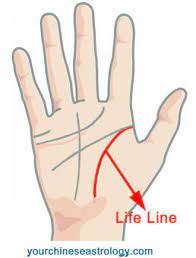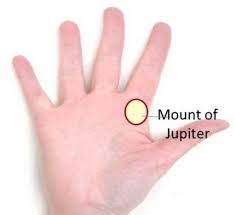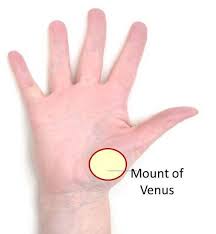
ADVERTISEMENT
facts :How to Read Palms
Palmistry, also known as chiromancy, has fascinated individuals for centuries, offering insights into personalities, destinies, and relationships through the study of the palm’s lines and mounts. In this guide, we’ll embark on a journey to demystify the art of palm reading, exploring its history, the basics, and providing practical tips for both beginners and advanced enthusiasts.
I. Introduction
A. Brief Overview of Palmistry
Palmistry, the ancient practice of reading palms, holds a timeless allure. It’s more than a mystical art; it’s a tool for self-discovery and understanding others. Let’s delve into the fascinating world of chiromancy.
B. Importance of Learning How to Read Palms
Unlocking the secrets held within our hands can lead to profound personal insights. Learning palmistry enriches our lives by fostering self-awareness and deepening connections with those around us.
II. History of Palmistry
A. Origins and Ancient Practices
The roots of palmistry trace back to ancient civilizations, with diverse cultures contributing to its development. Understanding its historical context adds depth to the practice.
B. Evolution Over Centuries
Palmistry has evolved, incorporating various traditions and techniques. Modern practitioners stand on the shoulders of ancient seers, blending old wisdom with contemporary insights.
III. Basics of Palm Reading

A. Understanding the Hand’s Structure
Before diving into lines and mounts, grasp the basics of hand anatomy. Each aspect of the hand contributes to the holistic interpretation of a palm.
B. Significance of Major Lines and Mounts

The hand’s lines, such as the heart, head, life, and fate lines, along with mounts like Jupiter and Venus, play pivotal roles in palmistry. Comprehending their meanings forms the foundation of any reading.
IV. Getting Started
A. Creating the Right Atmosphere
A serene environment is crucial for effective palm reading. Discover the importance of ambiance in fostering a connection between the reader and the seeker.
B. Tools Needed for Palm Reading
From magnifying glasses to reference guides, assembling the right tools enhances the accuracy and depth of your readings. Explore the essential instruments for a successful palmistry session.
V. Major Lines and Their Meanings
A. Heart Line

The heart line reveals emotional inclinations and the nature of one’s relationships. Uncover the nuances behind its variations and lengths.
B. Head Line

Delving into intellectual pursuits and decision-making, the head line unveils aspects of cognition and problem-solving. Learn to decode its messages.
C. Life Line

Contrary to common belief, the life line doesn’t predict longevity. Instead, it offers insights into one’s vitality and major life events. Decode its intricate language.
D. Fate Line

The fate line, often misunderstood, guides us through our journey in life. Understand its significance in shaping our destinies.
VI. Mounts and Their Influence
A. Jupiter Mount

Representing ambition and leadership, the Jupiter mount showcases our drive for success. Learn to interpret its prominence and characteristics.
B. Venus Mount

The Venus mount unveils our approach to love, creativity, and aesthetics. Explore the connection between its prominence and our romantic inclinations.
C. Saturn Mount

A significant mount associated with discipline and responsibility, Saturn’s influence is crucial for understanding our work ethic and commitment.
VII. Finger Shapes and Their Interpretations
A. Long Fingers

Long fingers signify certain personality traits. Discover how finger length contributes to the overall palm reading.
B. Short Fingers

Conversely, short fingers carry distinct meanings. Uncover the insights short fingers provide into an individual’s character.
C. Fingertip Shapes

The shape of fingertips adds another layer to palmistry. From square to pointed, each type offers valuable information about personality traits.
VIII. Special Symbols and Markings

A. Crosses, Triangles, and Stars
Beyond lines and mounts, special symbols and markings offer intricate details. Decode the language of crosses, triangles, and stars on the palm.
B. Understanding Unique Palm Features
No two palms are alike. Explore the uniqueness of each hand, from the number of lines to the presence of distinct features.
IX. Interpreting Fingerprints

A. Types of Fingerprints
Fingerprints, unique to each individual, hold clues to our innate characteristics. Unravel the mysteries behind arches, loops, and whorls.
B. Link Between Fingerprints and Personality

Discover the correlation between fingerprint patterns and personality traits. Understand how the smallest details can provide profound insights.
X. Common Misconceptions
A. Dispelling Myths About Palmistry
Separate fact from fiction by addressing common misconceptions surrounding palmistry. Enhance your understanding of this ancient art by dispelling prevailing myths.
B. Emphasizing the Interpretative Nature
Palmistry is an interpretative skill, not a definitive science. Emphasize the importance of intuition and context in reading palms accurately.
XI. Practice Tips for Beginners
A. Starting with Close Friends and Family
Embark on your palmistry journey by practicing on friends and family. Build confidence in your abilities before offering readings to a broader audience.
B. Keeping a Palmistry Journal
Document your experiences and observations in a palmistry journal. Reflecting on your readings helps refine your skills and track your progress.
XII. Advanced Techniques
A. Combining Elements for Comprehensive Readings
Master the art of combining various elements—lines, mounts, and symbols—for comprehensive and insightful readings. Elevate your practice to an advanced level.
B. Continuous Learning and Improvement
Palmistry is a lifelong journey of learning. Stay curious and continuously seek to enhance your skills through books, workshops, and interactions with fellow enthusiasts.
XIII. Ethical Considerations
A. Respecting Privacy During Readings
Maintain ethical standards by respecting the privacy of those seeking palm readings. Foster a safe and comfortable environment for open communication.
B. Providing Guidance, Not Definitive Predictions
Clarify the role of a palm reader as a guide rather than a fortune-teller. Empower individuals to make informed choices based on insights gained through palmistry.
XIV. Benefits of Learning Palmistry
A. Personal Growth and Self-Awareness
Beyond predicting the future, palmistry fosters personal growth and self-awareness. Discover how understanding oneself contributes to a more fulfilling life.
B. Enhancing Interpersonal Relationships
Unlock the potential to deepen connections with others. Learn how palmistry can improve communication and foster understanding in relationships.
XV. Conclusion
A. Recap of Key Points
Summarize the key takeaways from this comprehensive guide to palmistry. Reinforce the importance of embracing the interpretative nature of the practice.
ADVERTISEMENT
B. Encouraging Readers to Explore Palmistry
Invite readers to embark on their own palmistry journey. Provide resources and encouragement for further exploration of this ancient art.
Leave a Reply